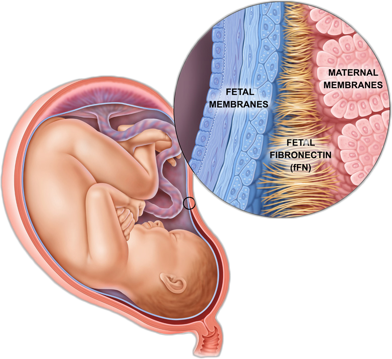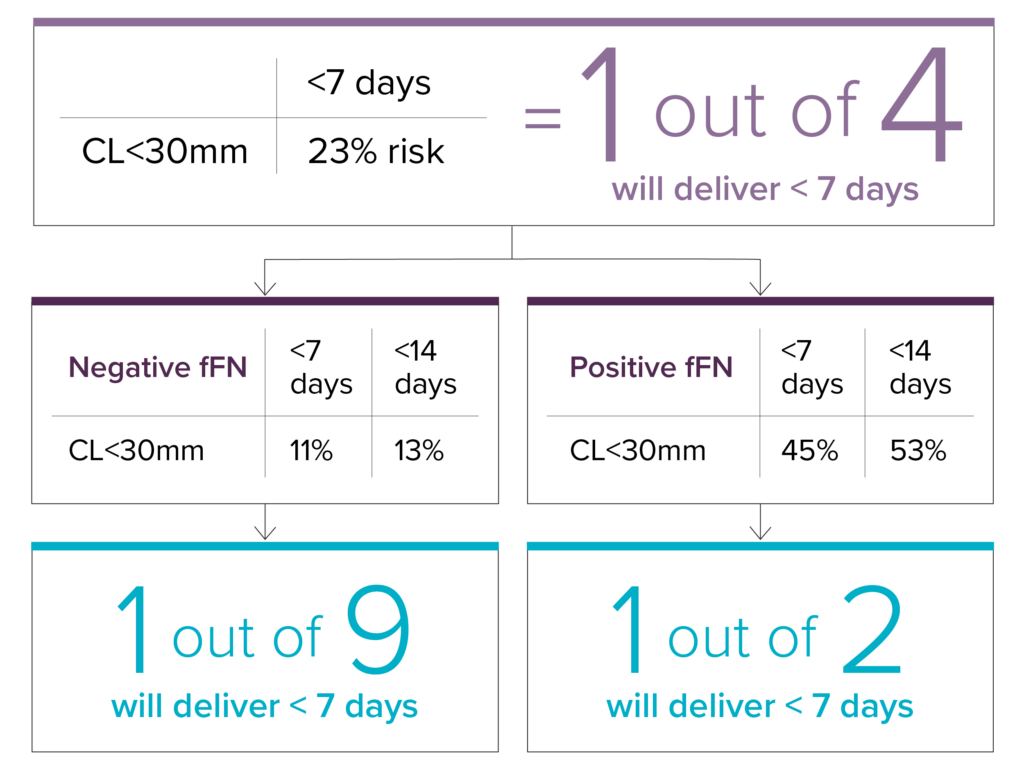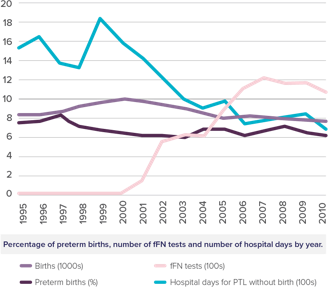Determining who is really at risk for preterm birth can be a challenge. Fetal fibronectin (fFN)
testing can help rule out 80% of patients presenting with symptoms of preterm labor.

fFN is the special glue between mother and baby
Fetal fibronectin (fFN) acts as an adhesive glycoprotein at the maternal-fetal interface and is a common biomarker for all four mechanisms of preterm birth. It is indicated for singleton and twin pregnancies.1
Gestational window for the fetal fibronectin test
- Women with symptoms of PTL from 24 – 34 weeks gestation
- Asymptomatic women from 22 – 30 weeks gestation
fFN test advantages1
- Result is objective, not subjective
- Reliably high NPV for both ≤ 7 or ≤ 14 days
- ~80% of patients will receive a negative result
- Can be used on both singleton and twin pregnancies
- Results <30 minutes after test initiation
- Sample can be collected for FREE
- Sample is valid for up to 8 hours at room temperature or 3 days refrigerated
- A negative result is valid even if a patient has had sex in the previous 24 hours
- The Rapid fFN test has high negative predictive value of >99% for ruling out imminent preterm birth1,2
Improve sPTB risk assessment with cervical length + fFN
Using fFN testing, in addition to measuring cervical length with transvaginal ultrasound (TVUS),
increases the predictivity of cervical length results by as much as 50%.3

fFN testing can help optimize resources
Standardizing preterm labor evaluations may reduce unnecessary admissions and interventions.4 Data shows that adding fFN to PTL triage may reduce length of stay. In one study, adding fFN testing reduced the average hospital stay from 5.2 days to 0.6 days.5
Adding fFN testing dramatically reduced unnecessary admissions

Case Study 1: Brigham and Women’s Hospital
At the Brigham and Women’s Hospital the introduction of fFN in PTL triage led to a decrease in unnecessary admissions.5

Case Study 2: Mayo Clinic
The Mayo Clinic reduced the rate of hospital admissions by 56% and reduced the average length of stay by 4.5 days.6
